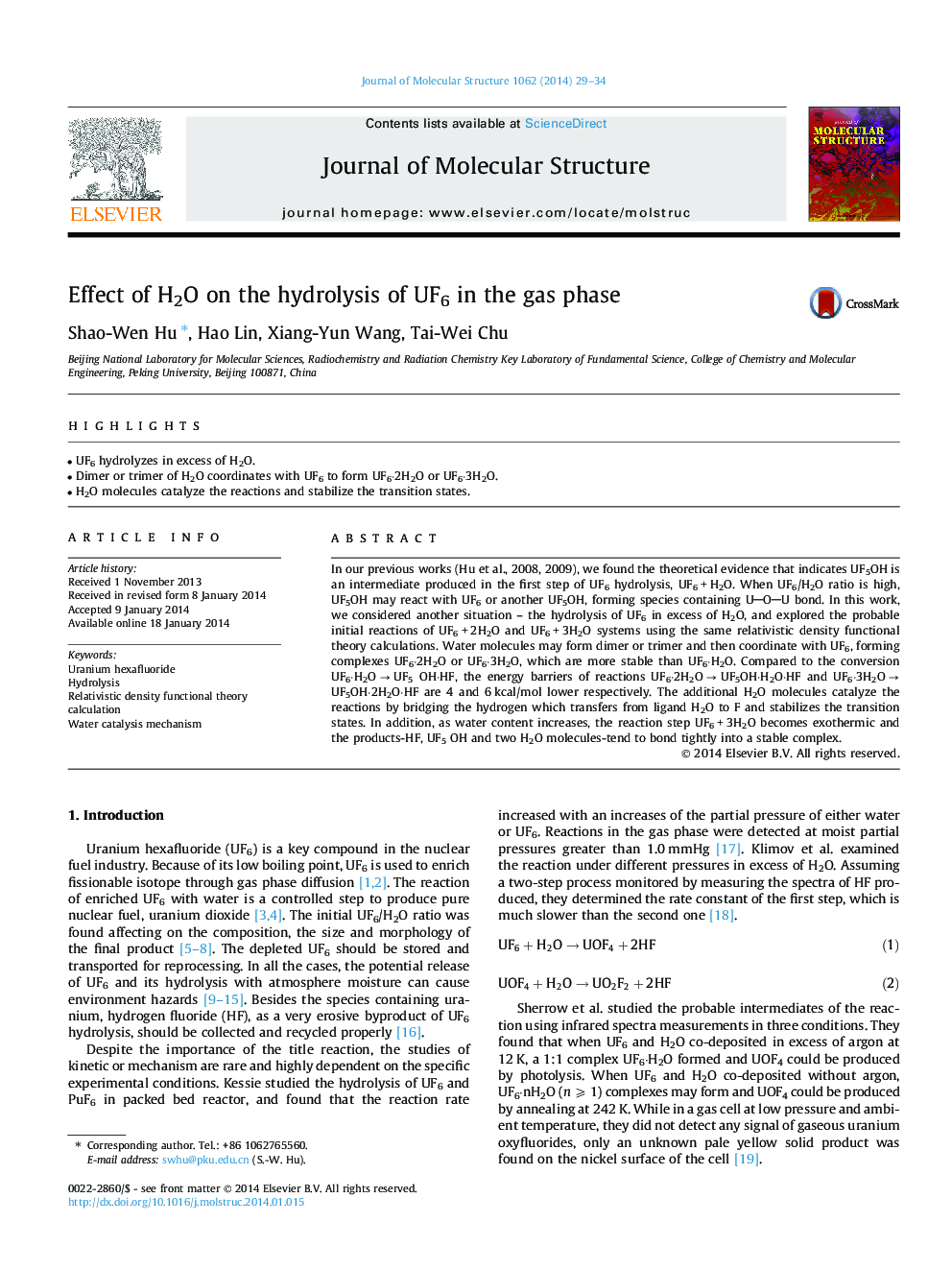| Article ID | Journal | Published Year | Pages | File Type |
|---|---|---|---|---|
| 1402705 | Journal of Molecular Structure | 2014 | 6 Pages |
•UF6 hydrolyzes in excess of H2O.•Dimer or trimer of H2O coordinates with UF6 to form UF6·2H2O or UF6·3H2O.•H2O molecules catalyze the reactions and stabilize the transition states.
In our previous works (Hu et al., 2008, 2009), we found the theoretical evidence that indicates UF5OH is an intermediate produced in the first step of UF6 hydrolysis, UF6 + H2O. When UF6/H2O ratio is high, UF5OH may react with UF6 or another UF5OH, forming species containing UOU bond. In this work, we considered another situation – the hydrolysis of UF6 in excess of H2O, and explored the probable initial reactions of UF6 + 2H2O and UF6 + 3H2O systems using the same relativistic density functional theory calculations. Water molecules may form dimer or trimer and then coordinate with UF6, forming complexes UF6·2H2O or UF6·3H2O, which are more stable than UF6·H2O. Compared to the conversion UF6·H2O → UF5 OH·HF, the energy barriers of reactions UF6·2H2O → UF5OH·H2O·HF and UF6·3H2O → UF5OH·2H2O·HF are 4 and 6 kcal/mol lower respectively. The additional H2O molecules catalyze the reactions by bridging the hydrogen which transfers from ligand H2O to F and stabilizes the transition states. In addition, as water content increases, the reaction step UF6 + 3H2O becomes exothermic and the products-HF, UF5 OH and two H2O molecules-tend to bond tightly into a stable complex.
